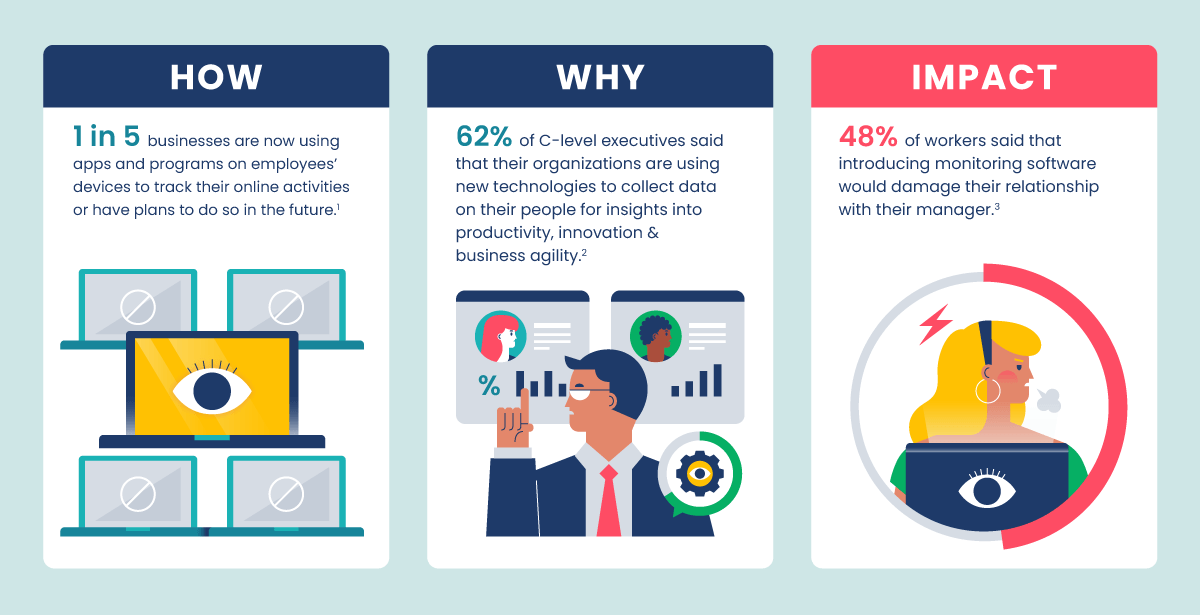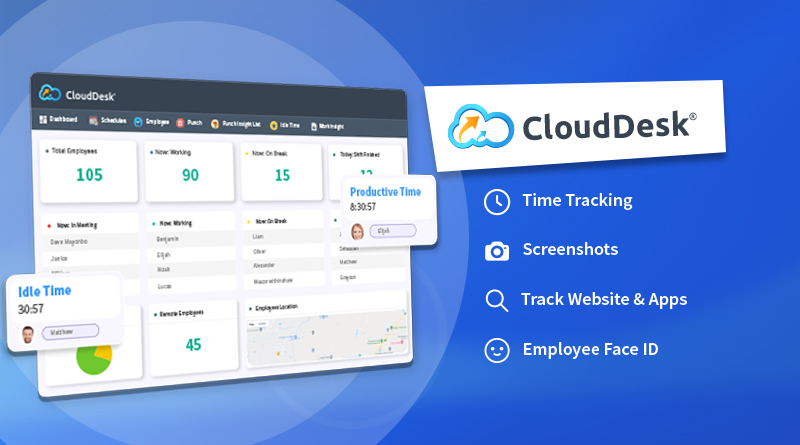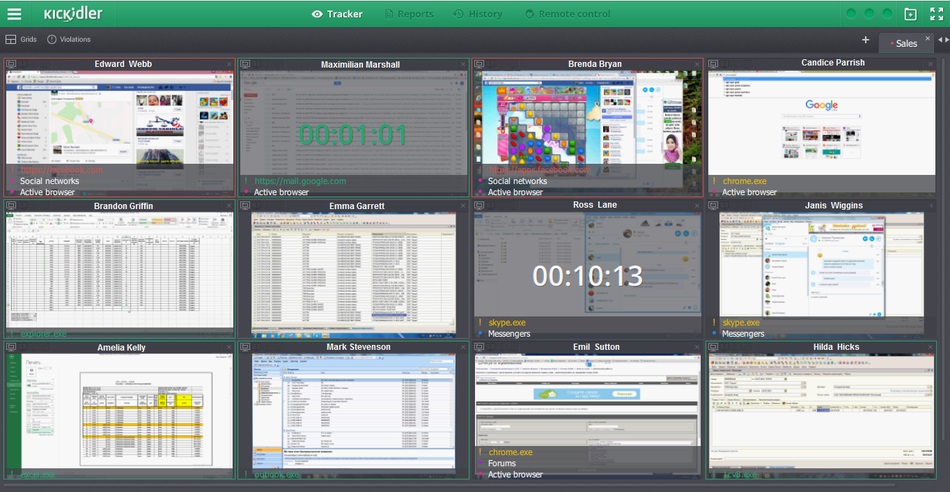It's a type of software that allows organizations to monitor, track and track the actions of employees. Employers are able to collect information about a range of factors associated with employee behavior. This includes Internet usage as well as application usage keyboard strokes, screenshots, and keystrokes. The principal goal of the employee monitoring software is to increase productivity, guarantee the compliance of company policies, safeguard sensitive information, and address security issues. When selecting an employee-monitoring software, there are a variety of aspects to take into consideration. Here are some key points to consider: Features- Determine which features you need, based on your organization's requirements. The most common features are blocking websites, keystroke logs, application usage tracking and email monitoring. Prioritize those features that match the goals of your monitoring.
Compliance and Privacy - Make sure that the software adheres to ethical and legal standards when it comes to monitoring of employees. Familiarize yourself with applicable laws and regulations within your area, for example privacy and data protection laws. Software that safeguards privacy for employees should have transparent and configurable settings.
User-Friendliness - Consider the software's accessibility and user-friendliness. Simple setup and a user-friendly interface will simplify the implementation and will save you time. Consider a dashboard that is customizable with intuitive reporting tools, as well as other features that let you easily to explore and understand the data you have collected.
Integration and Compatibility- Verify that the program is compatible with your current IT infrastructure and the software you are using, such as operating systems, email clients, tools for managing projects, and collaboration platforms. The compatibility lets you monitor your systems without disrupting normal operations.
Data Security - Review the security measures implemented by the program to safeguard the data it collects. Access controls, encryption and secure storage of data, and conformity to industry-standard security protocols are vital. Be sure that the software provider is well-known for its data protection track record and has strong security measures.
Scalability- Consider the capacity of the software in order to accommodate the growth of your business. If you plan on expanding your staff or adding new locations, you should choose a software that can easily scale to meet the changing demands of your business.
Reporting and Analytics- Assess the ability to report of the software. Look at features that give a complete view of employee performance, timing allocation, and trends. Customized analytics and reports can help you take informed choices and make improvements.
Customer Support – Evaluate the quality and availability of the customer support provided by software vendors. Examine their responsiveness, availability and technical support. If you've got a competent customer service team They will be able to provide prompt help whenever issues arise.
Cost - Take into account the pricing model like an annual fee or a subscription based on usage. Understanding the pricing structure and the additional costs, such as updates, support or other features is vital. Take into consideration the price and features of every product.
Transparency and Communication with Employees Transparency and Communication with Employees - Inform your employees regarding the implementation of software for monitoring. Define the reason as well as the scope and requirements of the monitoring. Inform them of how they can be protected, and also address the concerns of your clients.
By considering these factors it is possible to make a well-informed choice and select an employee monitoring program that is compatible with your company's requirements while respecting privacy concerns of employees as well as the law. Read the top rated time tracking monitoring software for site info.

What Are The Features Available In The Employee Monitoring Software And What Are The Differences Between Them?
The software for monitoring employees comes with many features that are designed to monitor and analyze employee actions. There are numerous features that can be found in employee monitoring solutions. The features vary depending on the software used but there are some aspects that are available. This feature offers a comprehensive overview of the time employees spend at work.
Keystroke logging- Keystroke recording records every keystroke typed by employees. It can find productivity bottlenecks, as well as detect unauthorized actions and collect evidence to aid investigations.
Screenshots or Screen Recording - Some software takes regular screenshots from computer screens, whereas others record their screens live. This feature can be utilized to track productivity, confirm compliance, or troubleshoot problems.
Internet Usage Tracking: This feature allows employees to monitor their internet activities including the websites they visit, the searches they conduct and downloads. This feature assists in identifying excessive browsing that is not related to work, potential security risks, and policy violations.
Application Usage Tracking - This feature is used to track which apps employees utilize during work hours. It lets you know what applications are the most popular, and helps to identify inappropriate or illegal use of the application.
Email Monitoring- Employers can check the content of emails received and sent by employees and their attachments, as well as the content of the email. It helps ensure compliance with company policy, prevents data leaks, investigates any suspicious activity, and assists to ensure the compliance of employees.
Document and file tracking This feature monitors the changes in the form of transfers, modifications, and additions to files. It helps protect sensitive information, monitor document collaborative work and ensures compliance with privacy policies for data security.
Remote Monitoring- Remote monitoring capabilities enable employers to supervise employees working remotely or work from different locations. Employers can track the work of their employees and guarantee their productivity, regardless of the location they're physically.
Productivity Analysis Software for employee monitoring often has features for productivity analysis that provide information on employee time allocation and patterns of work. These analyses identify areas that need improvement and optimize the workflow.
Reporting and Analytics- Robust reporting and analytics features generate detailed reports and visualizations using the data collected. These reports offer valuable insight on employee performance in time management, as well as resource allocation.
Compliance and Policy Management- Some software solutions offer features to ensure compliance with regulations of the industry and company guidelines. Employers can define and enforce company policies on acceptable use of computers.
Alerts and Notifications: Alerts and notifications alert employers and managers about certain events and activities. For example, they can be alerted about excessive internet usage or attempts to gain access to restricted sites, or any other suspicious activity.
It is important to be conscious that various employee monitoring solutions may have different capabilities and features. Consider the features of software that are compatible with your monitoring objectives and adhere to legal and ethical guidelines in your area of responsibility. View the recommended time tracking monitoring services for more recommendations.

How Can Employee Surveillance Software Adhere To Compliance And Privacy Law?
Adherence to compliance and privacy laws is an essential aspect of employee monitoring software. Here are a few ways employee monitoring software complies with compliance and privacy laws, even though the legal requirements vary from jurisdiction to jurisdiction. Consent and notice- Many jurisdictions demand informed consent by employees and require them to be notified of monitoring activities in advance. Monitoring software for employees typically includes features that enable employers to clearly communicate their monitoring policies to employees. This might include providing written notifications, obtaining consent through consent forms, or establishing an employee handbook that details the monitoring practices.
Transparent Monitoring Polices- Employee monitoring tools help promote transparency. They ensure that employees understand what types of information is being gathered and for what purpose, as well in the scope of monitoring. The clear and complete policies help employees to be aware of the limitations and privacy rights and monitoring.
Data Minimization: To ensure that employee monitoring programs are in compliance with privacy laws They usually adhere to data minimization. It means only the necessary data is collected and retained as unnecessary or irrelevant data is avoided. The software restricts data collection only to the data required for monitoring purposes, thereby making it easier to manage privacy and compliance.
Anonymization & Aggregation Some employee monitor software anonymizes or aggregates data for further security of privacy for employees. Anonymization removes personally identifiable information (PII) from data which makes it impossible to connect information with specific individuals. Aggregation makes use of data from many employees to provide information for a large group without identifying anyone.
Secure data storage and encryption - Employee monitoring software places the highest priority on the security of data. It generally uses secure data storage practices and encryption methods to shield the data from unauthorised access, breaches or disclosures that are accidental. This includes securing data both during transit and in storage.
Access Controls, Restricted Permissions In order to make sure that the company is in compliance with laws employee monitoring software provides specific access rights and permissions. This permits employers to restrict access to monitoring data to those who are authorized to use it for legitimate reasons for example, HR personnel or designated administrators.
Rights of Employees Rights Right to respect the rights of employees is essential to comply with privacy and compliance laws. Software used to monitor employees often includes features that allow employees to access their monitoring data, ask for corrections, and even file complaints. Employees have the ability to make use of their rights in the event of privacy breaches and submit complaints.
Conformity to Data Protection Regulations – The employee monitoring software is built to comply with the relevant laws governing data protection, such as General Data Protection Regulations in Europe and California Consumer Privacy Acts in the United States. Compliance includes implementing measures that protect personal data and honor the rights of the data subject.
Although employee monitoring software can support compliance efforts in some instances, it's equally important that organizations seek legal advice from professionals to keep up-to-date with the applicable laws and regulations within their area of responsibility. Compliance and privacy laws require a comprehensive strategy that includes more than software. It also requires clear policies, ongoing compliance monitoring, and employee education. Read the recommended time tracking monitoring services for blog advice.
